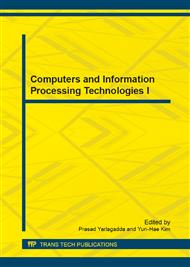p.368
p.376
p.381
p.389
p.395
p.400
p.404
p.410
p.416
Petri Net-Based Modeling and Verification of Automatic Train Speed Control System
Abstract:
How to provide dependability based on safety is a challenge faced by train control system. Formal approaches are important for modeling and verification of automatic speed control Systems. In the paper, a formal model of automatic speed control Systems based on Petri nets (ASCS-nets) is presented. And the transformation approaches from automatic train speed control system to ASCS-nets are given. Correctness verification of automatic train speed control system is implemented based on ASCS-nets model.
Info:
Periodical:
Pages:
395-399
Citation:
Online since:
June 2014
Authors:
Price:
Сopyright:
© 2014 Trans Tech Publications Ltd. All Rights Reserved
Share:
Citation:


